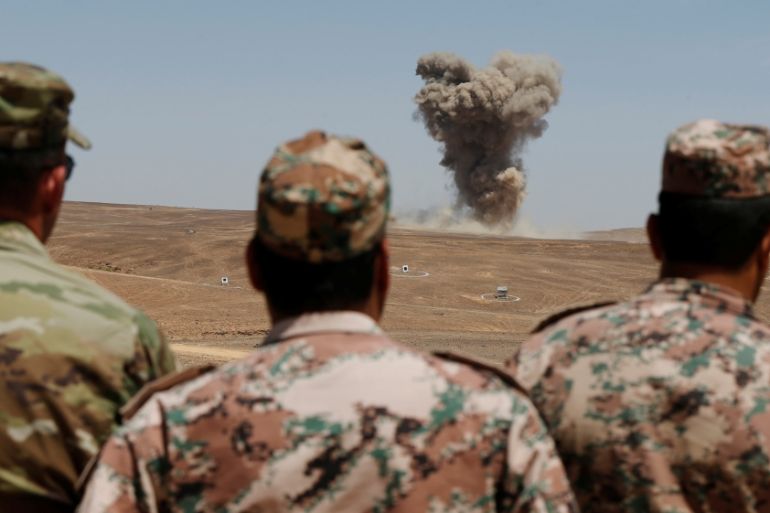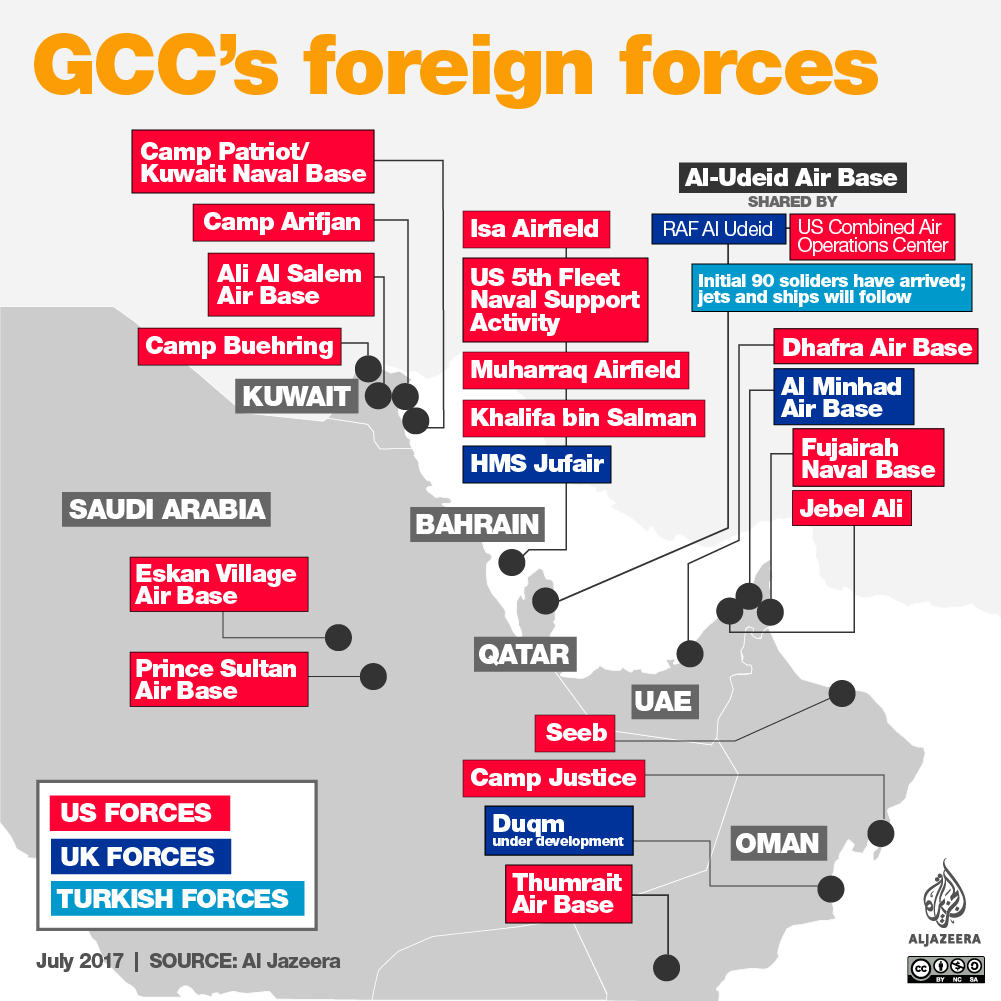The growing militarisation of the GCC
The Gulf Coordination Council (GCC) countries are some of the most heavily armed in the world.

As diplomatic efforts to resolve one of the worst political fallouts in Gulf Cooperation Council (GCC) history continue, Al Jazeera looks at the region’s growing military arsenals.
Saudi Arabia, the United Arab Emirates (UAE), Bahrain and Egypt severed diplomatic ties with Qatar on June 5, cutting air, sea and land routes to the tiny Gulf nation after accusing it of supporting “terrorism” in the region.
Keep reading
list of 4 itemsQatar emir condemns ‘genocide’ in Gaza, urges ceasefire at GCC summit
‘Enduring commitment’: Key takeaways from US-GCC joint statement
Analysis: Efforts to end Assad isolation gather speed after quake
The Saudi-led group last month issued a tough 13-point list of demands to Qatar that included shutting down the Al Jazeera network and other news outlets, cutting ties with Islamist groups such as the Muslim Brotherhood, limiting ties with Iran and expelling Turkish troops stationed in the country.
Qatar has rejected the demands, saying that agreeing to them wholesale would undermine its sovereignty.
But the massive GCC arms arsenals – in 2014 they collectively spent $113bn on military purchases – mean that if diplomacy fails, any small spark could quickly touch off a much larger conflict.
The US and Saudi Arabia signed a $110bn arms deal in May that has long been in the pipeline. Weeks later, Qatar inked its own $15bn deal for US F15 fighter jets.
With an estimated annual budget of $60bn, Saudi Arabia is projected to become the fifth biggest arms buyer by 2020.
Qatar is also home to the largest US military base in the Middle East, which hosts more than 10,000 American soldiers.
The US has approximately 35,000 personnel based across the region and the UK has about 1,200 service personnel.
Adding further military might to the regional equation, Turkish forces have since June arrived in Qatar to create Ankara’s first ever Middle East military base.
The importance of the strategic location is amplified by its oil and gas reserves. The GCC countries sit on 30 percent of the world’s total crude oil reserves and 21 percent of the world’s natural gas.

